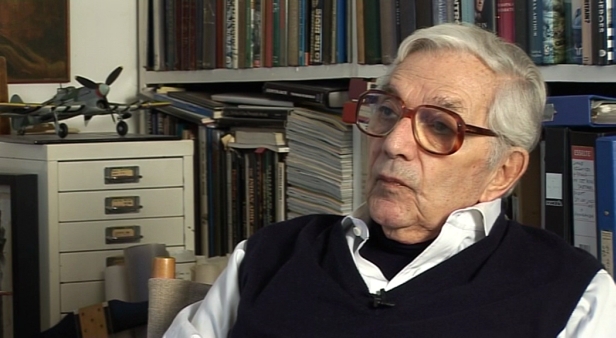NEXT STORY

Moving the shoot to Ireland
RELATED STORIES

NEXT STORY

Moving the shoot to Ireland
RELATED STORIES


|
Views | Duration | |
|---|---|---|---|
| 101. Sharks: '... then suddenly they attack' | 107 | 01:02 | |
| 102. The Ipcress File | 135 | 02:51 | |
| 103. Minimal design, maximum impact | 117 | 02:55 | |
| 104. Barry Lyndon: working with Kubrick again | 289 | 02:29 | |
| 105. Barry Lyndon: location scouting | 187 | 04:31 | |
| 106. Moving the shoot to Ireland | 127 | 03:22 | |
| 107. Barry Lyndon: closing down the production | 187 | 02:40 | |
| 108. Cracking up | 227 | 02:08 | |
| 109. Starting life again after my breakdown | 204 | 02:13 | |
| 110. The true Stanley Kubrick | 419 | 04:12 |


I never felt comfortable, and there were several reasons. A) I did not believe that doing a period picture all on location was the sort of settings we needed – big country houses and all that – would be more economical than building parts in the studio and then using… if you have a great interior location, use it, by all means.
And the other reason was that I felt very concerned about Stanley's idea of shooting it all on location, because he had just done the Clockwork Orange and he had received the most horrifying hate mail that I've ever seen. And he wouldn't even talk... discuss it with his family, but he had discussed it with me, and I mean it was unbelievable, you know. If I know somebody who had a gun licence or something... and then he said, 'But you know, I've thought about it, but if somebody wants to kill me they have the advantage, so forget the gun licence'. But, so I thought, how am I going to get him out on location, in any case, and I didn't. We had a young... about six young photographers, including a... a niece of mine, who had a Leica, or something, and we had made the garage at Borehamwood, where he was living, into a miniature war room, with ordinance survey maps all over, little flags, you know, and radius, starting with a five-mile radius around the house, ending up with a 40-mile radius. And he used, I think, every excuse not to go out on location, because these kids, they only got one page of script, or something, so they didn't even know what they were shooting.
And, Stanley's argument to me was, 'You never know what's round the corner', you know, and I said, 'Come on, Stanley', but the major locations they are all, you know, written about, know about. I know Hatfield is there, and this is there, and so on. So I think we spent four or five months just working out of his house, at the miniature war room, and with our kid photographers, and each night we had a screening. And I felt like a sort of unwanted teacher, because I did know 18th century, and every time Stanley saw something Victorian he said, 'That I like', and I said, 'That you can't choose, because it's Victorian'. He said, 'What's Victorian?' I said, 'The wallpaper is Victorian'. 'Prove it to me'! I mean, this sort of discouragement... and in the meantime, he collected every book, and material on the period, and eventually became a great expert on the Georgian period. So secretly, he was always drawn to the Victorian, you know. Because it's so different, it's not as severe.
Sir Kenneth Adam (1921-2016), OBE, born Klaus Hugo Adam, was a production designer famous for his set designs for the James Bond films of the 1960s and 1970s. Initially, he trained as an architect in London, but in October 1943, he became one of only two German-born fighter pilots to fly with the RAF in wartime. He joined 609 Squadron where he flew the Hawker Typhoon fighter bomber. After the war, he entered the film industry, initially as a draughtsman on This Was a Woman. His portfolio of work includes Barry Lyndon and The Madness of King George; he won an Oscar for both films. Having a close relationship with Stanley Kubrick, he also designed the set for the iconic war room in Dr Strangelove. Sir Ken Adam was knighted by Queen Elizabeth II in 2003.
Title: "Barry Lyndon": location scouting
Listeners: Christopher Sykes
Christopher Sykes is an independent documentary producer who has made a number of films about science and scientists for BBC TV, Channel Four, and PBS.
Tags: Clockwork Orange, Borehamwood, Hatfield, Stanley Kubrick
Duration: 4 minutes, 31 seconds
Date story recorded: December 2010 and January 2011
Date story went live: 11 November 2011